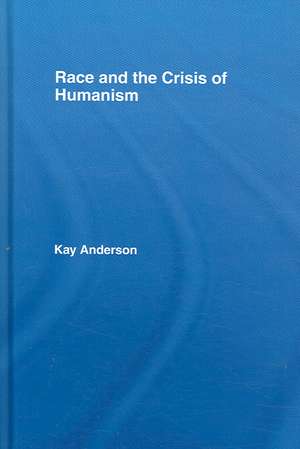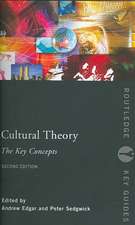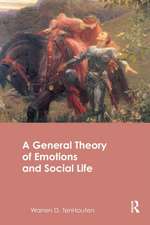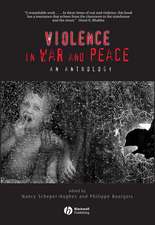Race and the Crisis of Humanism
Autor Kay Andersonen Limba Engleză Hardback – 27 oct 2006
In Kay Anderson's provocative new account, she argues that British colonial encounters in Australia from the late 1700s with the apparently unimproved condition of the Australian Aborigine, viewed against an understanding of 'humanity' of the time (that is, as characterised by separation from nature), precipitated a crisis in existing ideas of what it meant to be human.
This lucid, intelligent and persuasive argument will be necessary reading for all scholars and upper-level students interested in the history and theories of 'race', critical human geography, anthropology, and Australian and environmental studies.
| Toate formatele și edițiile | Preț | Express |
|---|---|---|
| Paperback (1) | 355.64 lei 6-8 săpt. | |
| Taylor & Francis – 6 oct 2006 | 355.64 lei 6-8 săpt. | |
| Hardback (1) | 1001.84 lei 6-8 săpt. | |
| Taylor & Francis – 27 oct 2006 | 1001.84 lei 6-8 săpt. |
Preț: 1001.84 lei
Preț vechi: 1221.75 lei
-18% Nou
Puncte Express: 1503
Preț estimativ în valută:
191.71€ • 198.08$ • 159.48£
191.71€ • 198.08$ • 159.48£
Carte tipărită la comandă
Livrare economică 20 martie-03 aprilie
Preluare comenzi: 021 569.72.76
Specificații
ISBN-13: 9781844721528
ISBN-10: 1844721523
Pagini: 236
Ilustrații: 12 halftones
Dimensiuni: 156 x 234 x 19 mm
Greutate: 0.5 kg
Ediția:1
Editura: Taylor & Francis
Colecția Routledge
Locul publicării:Oxford, United Kingdom
ISBN-10: 1844721523
Pagini: 236
Ilustrații: 12 halftones
Dimensiuni: 156 x 234 x 19 mm
Greutate: 0.5 kg
Ediția:1
Editura: Taylor & Francis
Colecția Routledge
Locul publicării:Oxford, United Kingdom
Public țintă
Postgraduate and UndergraduateCuprins
1. Introduction 2. The Human: Savagery and Nature 3. Australia's 'State of Nature' 4. Rethinking 'Race' from Australia 5. 'Stone Age Man': Race, Evolution, and the Human 6. Conclusion
Descriere
Kay Anderson's provocative account traces how the nineteenth century ideas of race arose. Including historical understandings of 'humanity'. This original contribution will be of interest to academics of diverse social and humanities backgrounds.















